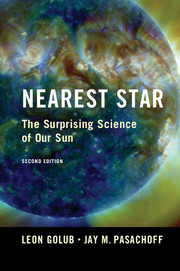1 - The Sun
Published online by Cambridge University Press: 05 February 2014
Summary
ORIGINS
About 13.8 billion years ago, for reasons we do not yet understand, the Universe came into existence. Matter as we know it did not exist and even the forces by which bits of matter and radiation interact with each other were different than they are today. Our knowledge of physics is good enough now for us to calculate the conditions prevailing back to an incredible 0.000000000000000000000000000000000000000000001 seconds (10−45 s) after it all started. Of course, this does not get us all the way back to zero or before (if the word “before” has a meaning in this context), but we think we can speak with a fair degree of confidence about how things proceeded thereafter.
By 0.000000000001 seconds of age, the four forces of nature that now exist – gravity, strong and weak nuclear, and electromagnetic – were in place, and by the age of several hundred seconds the Universe contained the familiar matter that continues to exist today, the stuff of which ordinary atoms are made. A major turning point occurred at the age of about 380,000 years, when the Universe cooled enough for electrons to combine with the available nucleii, which were mostly protons and helium. At this point, atoms started to form and it suddenly became possible for photons of light to travel long distances without being absorbed. Before this time the Universe was opaque, and our best telescopes will not be able to look back beyond this era.
- Type
- Chapter
- Information
- Nearest StarThe Surprising Science of our Sun, pp. 1 - 28Publisher: Cambridge University PressPrint publication year: 2014



